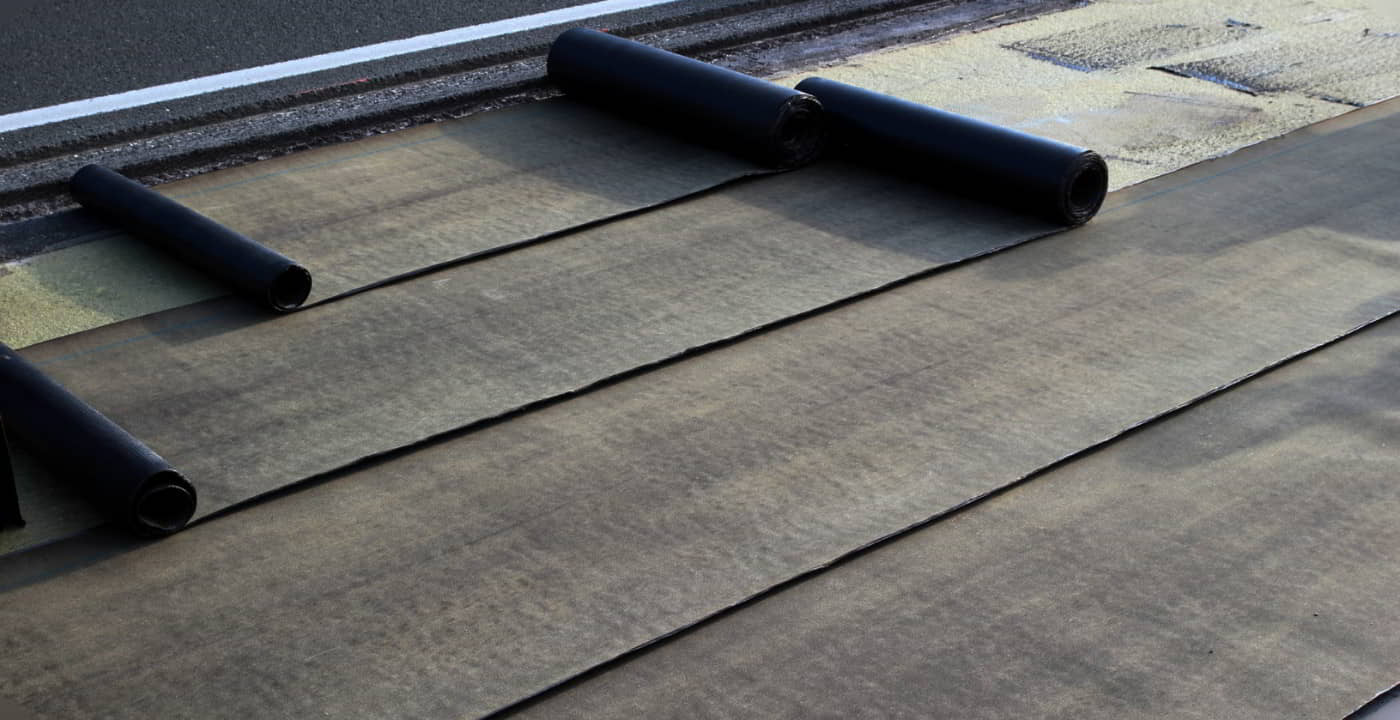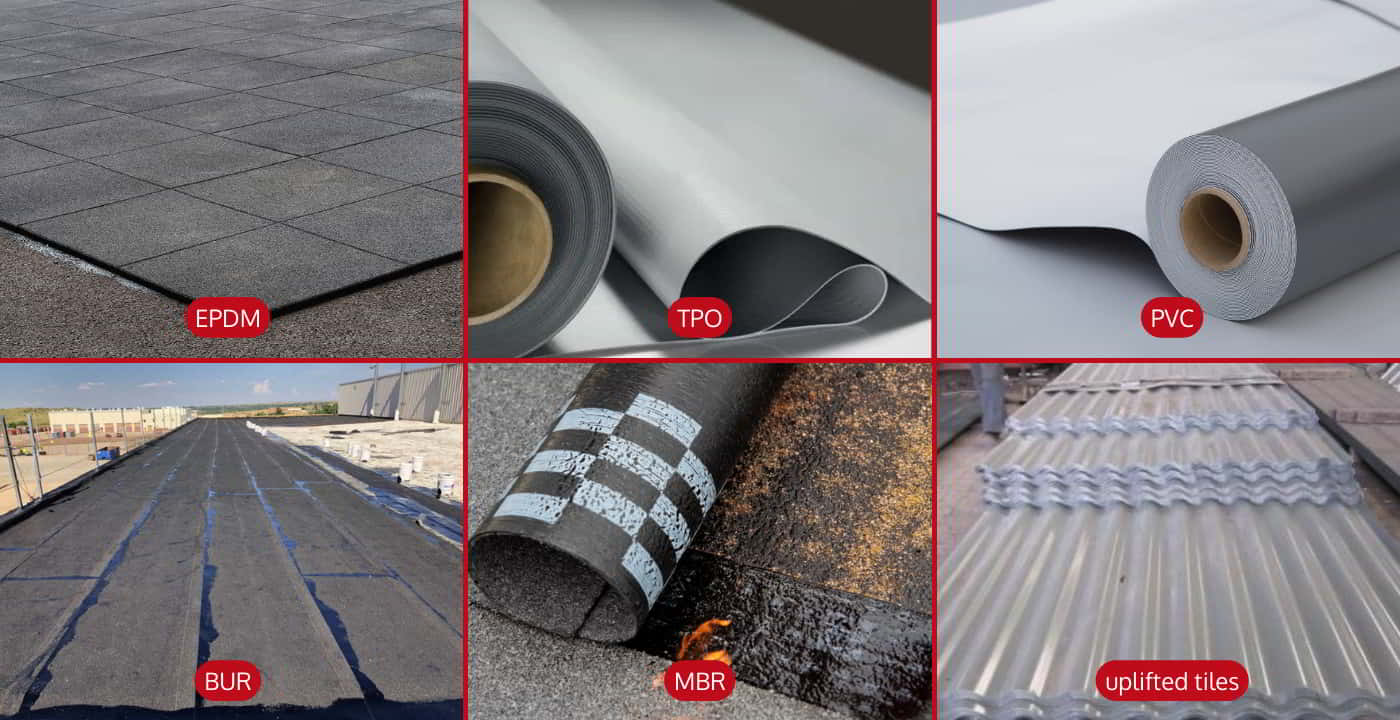
With their versatility and cost-effectiveness, flat roofs are becoming more and more favoured in construction – not just for commercial or industrial buildings, but also for homes. However, selecting from the range of flat roof covering types can seem confusing with a lot of scientific-seeming acronyms and pros and cons for each of the flat roof materials. At Manchester Roofers, we’re experienced in the multiple flat roof coverings, so here’s a quick guide.
The Best Flat Roofing Materials at a Glance
Don’t have the time right now to read in-depth? Here’s a quick rundown of the six roofing materials covered here:
- EPDM – Good value, long lasting, and durable. Very popular.
- TPO – Energy efficient making them cost-effective over time.
- PVC – Low maintenance and well-renowned.
- BUR – Tried and tested for decades, a strong roof well-regarded in the construction industry.
- MBR – An upgrade from traditional BUR.
- GRP – Seamless fibreglass roofing, incredibly weather resistant but heavy.
Flat Roof Covering Options

Choosing the flat roof material for your building means taking into account many factors, such as cost, longevity, ease of installation and energy efficiency. While there’s no all-round best roofing material to make your choice simple, some options are more popular than others so we have ordered our list accordingly.
1. EPDM (Ethylene Propylene Diene Monomer)
The most widely used type of flat roof, EPDM roofs are very long lasting, with a lifespan of 30 years or more. EPDM is a synthetic rubber roofing membrane that’s highly durable, being resistant to UV, weathering and thermal shock. It’s also relatively cheap, adding to its popularity.
EPDM can be punctured, however. While sharp objects rarely fall from the sky, overhanging branches can occasionally damage your roof and should be cut back as part of the general roof maintenance.
2. TPO (Thermoplastic Olefin)
Growing in popularity, TPO roofs are renowned for being lightweight, energy efficient and durable, making them a great choice for flat roof types in the UK. It’s important to get a professional installation of a TPO roof, however, as they can shrink over time and if poorly laid, a TPO flat roof can become problematic.
Although TPO roofs require a higher budget than EPDM, the long-term advantages of the energy efficiency can offset this, making them another cost-effective flat roof covering.
3. PVC (Polyvinyl Chloride)
A well-recognised material, PVC is a highly durable and long-lasting flat roof covering that is chosen for around a fifth of the flat roofs across the UK. PVC is flexible and doesn’t shrink or expand as much as some of the other materials, meaning it’s a great choice as a low-maintenance option.
These advantages can come at a cost, as PVC is generally more expensive than the other options. Where the budget is less limited, though, it’s well worth considering.
4. BUR (Built-Up Roofing)
BUR is a process of applying multiple layers of bitumen to build up a strong and water-resistant roof. It has been a popular choice for flat roofs in the UK for almost 100 years, with advancements in technology continuing to improve its strength and longevity.
Tried and tested, BUR has long been favoured in the construction industry even as newer materials have come out, especially when the roof is expected to be walked on and used regularly. BUR roofs are typically more labour-intensive to construct, but despite this, it remains a cost-effective flat roof covering.
5. MBR (Modified Bitumen)
An evolution of the BUR flat roofing systems, MBR involves modifying the traditional bitumen with additional materials. The result is a flat roof material with excellent durability and flexibility, known for its weather resistance and energy efficiency.
The downsides of MBR tend to be with cost and installation complexity. It’s a roofing material that can only be installed by trained experts.
6. GRP/GFRP (Fibreglass)
Known almost universally as “fibreglass”, Glass Reinforced Polymer (GRP) or Glass Fibre Reinforced Polymer (GFRP) roofing is another option for flat roof types in the UK.
One of the advantages of fibreglass roofing is its seamless nature, producing a roof that has no joins or seams that can be vulnerable to leaks. It’s low maintenance, waterproof and durable – resistant to UV and pretty much anything the UK’s weather can throw at it!
It’s not without its drawbacks, of course. GRP flat roof coverings are typically heavier than other flat roof material types, so the right level of structural support is essential. It needs to be installed by a GRP specialised roofer who must take care to follow all health and safety guidelines when using the chemicals involved – ventilation on site is a must. All this means that fibreglass roofing comes with a greater initial cost. While this is often mitigated over its lifespan, it can be off-putting for many.
Choosing the Perfect Flat Roof Covering
With all the different types of flat roof covering available, it’s not unusual to struggle with the decision. At Manchester Roofers, our experts are available to help guide you. We will look at your building plans, consider every aspect from budget and installation difficulty right through to expected daily use and desired style, helping you select the flat roof type that’s right for your project. Contact us today for a no-obligation consultation.





